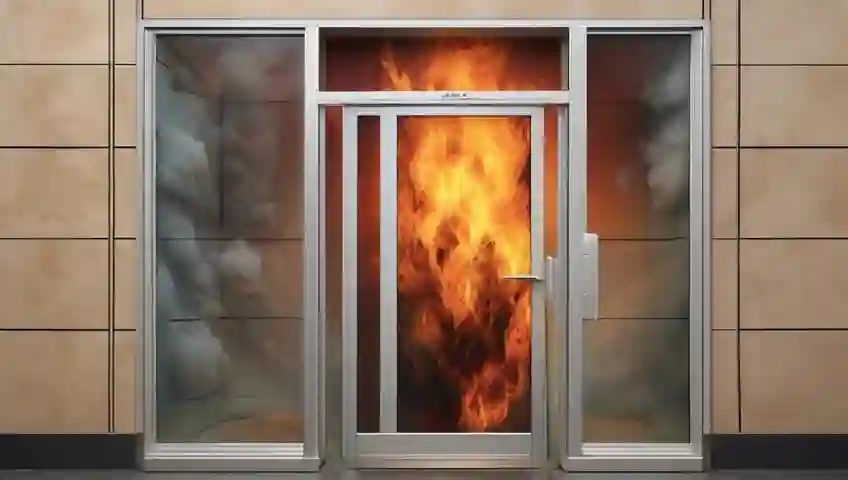When it comes to ensuring the safety of a building, particularly in commercial and industrial settings, fire protection is paramount. One essential element of fire safety is the choice of fire protection glass. This specialized glass not only enhances the aesthetic appeal of a building but also plays a critical role in preventing the spread of fire and smoke. In this article, we’ll explore the different types of fire protection glass available, their ratings, applications, and key considerations to help you choose the right glass for your building.

Understanding Fire Protection Glass
Fire protection glass is designed to withstand high temperatures and provide an effective barrier against flames and smoke. Unlike standard glass, which can shatter and fail under extreme heat, fire-rated glass is engineered to maintain its integrity for a specified period. This feature is crucial for safety, as it allows occupants time to evacuate and helps protect property and lives.
Types of Fire Protection Glass
There are several types of fire protection glass, each designed for specific applications and fire ratings. The most common types include:
- Wired Glass: This type of glass incorporates a wire mesh embedded within the glass. While it provides a level of fire resistance, its appearance is less aesthetically pleasing. Wired glass is typically used in locations where safety is paramount, such as in doors and windows where visibility is less important.
- Tempered Glass: Also known as toughened glass, tempered glass is treated with heat and pressure to increase its strength. While it provides some degree of fire resistance, it is generally used in applications where safety against impact is more critical than fire resistance.
- Fire-Resistant Glass: This type of glass is specifically designed to withstand fire for a certain period (usually 20, 30, or 60 minutes). Fire-resistant glass is often made from multiple layers of glass and is typically used in fire-rated doors and windows.
- Intumescent Glass: This advanced type of fire protection glass features a special interlayer that expands when exposed to heat, forming a thick, insulating barrier that helps to block flames and smoke. Intumescent glass is often used in high-rise buildings and areas where fire-rated glass is required to meet stringent codes.
- Ceramic Glass: Ceramic glass is highly durable and can withstand extremely high temperatures. It is often used in applications such as fireplace doors, where aesthetics and high heat resistance are essential.
Fire Ratings Explained
Fire protection glass is classified according to its fire rating, which indicates the amount of time it can withstand fire before failing. Common fire ratings include:
- 20-Minute Rating: Offers basic protection and is typically used in interior applications, such as partitions.
- 45-Minute Rating: Provides a higher level of fire resistance and is suitable for exterior applications where exposure to the elements is a concern.
- 60-Minute Rating: Used in critical areas where extended fire resistance is needed, such as stairwells and egress routes.
Key Considerations When Choosing Fire Protection Glass
Choosing the right fire protection glass involves several key considerations:
- Building Codes and Regulations: Before making a decision, familiarize yourself with local building codes and regulations. These codes dictate the type of fire protection glass required for specific applications and must be adhered to for compliance.
- Intended Use: Consider the intended use of the space. For example, areas with high foot traffic may benefit from more durable glass types, while aesthetic considerations may take precedence in public-facing areas.
- Aesthetic Preferences: Fire protection glass comes in various styles and finishes. Consider how the glass will fit into the overall design of the building and whether clear, frosted, or tinted glass is more appropriate for your needs.
- Performance Requirements: Evaluate the performance requirements of the glass. This includes fire rating, impact resistance, and thermal insulation properties. Choose a type of glass that meets the specific needs of your building and its occupants.
- Budget Considerations: Fire protection glass can vary significantly in cost. Determine your budget early in the planning process, keeping in mind that investing in higher-quality fire-rated glass can lead to long-term savings by reducing risks and improving safety.
Conclusion
Choosing the right fire protection glass for your building is a critical decision that impacts the safety and functionality of the space. By understanding the different types of fire protection glass, their ratings, and key considerations, you can make an informed choice that not only enhances safety but also complements the design of your building. Always consult with fire safety professionals and adhere to local regulations to ensure your building meets all necessary safety standards. With the right fire protection glass, you can protect lives and property while maintaining the integrity and beauty of your space.